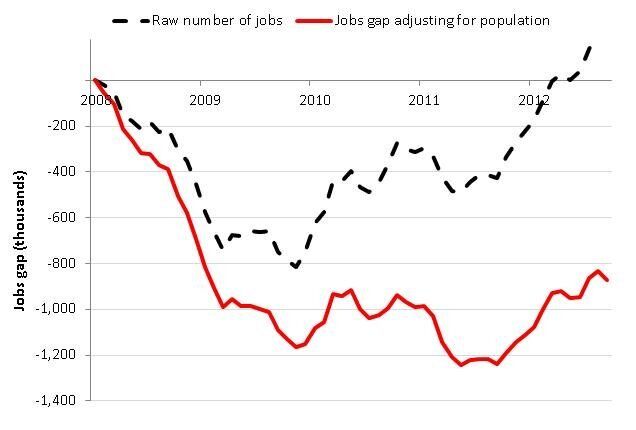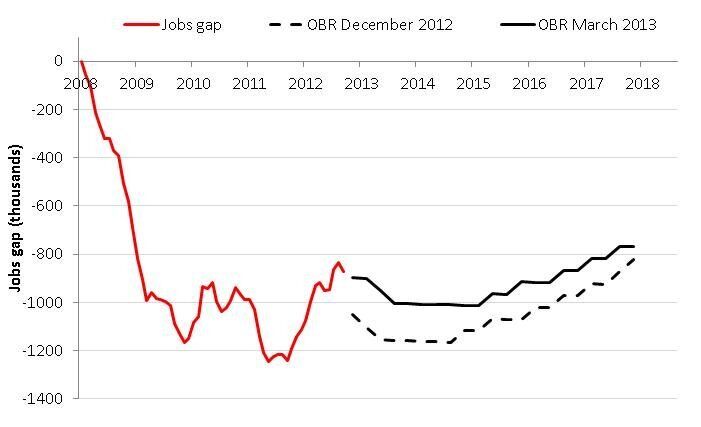Amidst this week's economic gloom were two bright spots of the jobs market. First, new stats from the ONS led to widespread reports that employment had again reached record levels, with the number of people in work rising 131,000 in the quarter to 29.7 million. Then the OBR upgraded its forecasts for employment over the next few years. This upgrade needs to be balanced out against big downgrades for wages. Even so, there's no denying that job creation continues to outperform expectations.
So far, so good. But as I argued here earlier this month, there is a danger that celebrating record levels of employment creates a false sense of security about how tough the jobs recovery is going to be. Yes, there are more people in work - 160,000 since 2008 to be exact. But there are also more people - the UK population aged over 16 is up 1.7 million since 2008. It's only when you control for this population growth, effectively focusing on the employment rate rather than the level, that you get a true sense of whether jobs are being created as fast as they need to be.
Chart 1 updates a figure for employment, controlling for population growth, from this week's new data. It shows that restoring the UK to its pre-recession employment rate of 60.3% would require the creation of around 870,000 jobs from where we are today. This is the true size of the UK jobs gap.
Chart 1: The UK jobs gap
Change in raw number of jobs and the 'jobs gap' controlling for population growth since 2008, aged 16 and over

But the more striking lesson from this week's statistics comes when you put the OBR projections in the context of trends in employment since the 2008 recession struck. Chart 2 below shows this week's revised OBR forecasts for the employment rate, translating these into a measure of the jobs gap going forwards. It confirms that, yes, this week saw strong upward revisions to the forecasts (the dotted line shows last December's lower projections).
Chart 2: The jobs gap and OBR projections
Change in number of jobs controlling for population growth since 2008, aged 16 and over

But the path of the future employment rate remains worryingly flat. Even by 2018, at the end of its forecast period, the OBR expects the UK to remain well below its pre-recession employment rate, still around 770,000 jobs short of the number needed to restore the employment rate of 2008.
